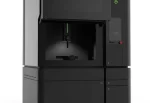3D Printing vs Traditional Manufacturing: A Comprehensive Analysis
Manufacturing has come a long way since the Industrial Revolution. Today, there are numerous manufacturing technologies used to produce everything from cars to complex medical devices. However, two manufacturing technologies stand out – 3D printing and traditional manufacturing. In this article, we will explore the advantages and disadvantages of both technologies, and compare them based on several parameters.
Introduction to 3D Printing and Traditional Manufacturing
3D printing, also known as additive manufacturing, is a process of creating three-dimensional objects by layering materials. It involves the use of computer-aided design (CAD) software to create a digital model, which is then sliced into layers using specialized software. The 3D printer reads the sliced data and creates the object layer by layer until the entire model is completed.
Traditional manufacturing, on the other hand, involves subtracting, molding or reshaping raw materials such as metal, plastic, or wood to create the desired product. The process often involves the use of specialized machines such as lathes, milling machines, and presses. It also requires skilled labor to operate these machines efficiently.
Advantages of 3D Printing
1. Design Flexibility
With 3D printing, designers have complete freedom to create complex shapes and structures that would be impossible to manufacture with traditional methods. The technology allows for the creation of intricate internal features, hollow parts, and even moving parts within an object.
2. Quick Prototyping
3D printing significantly reduces the time required to create prototypes. With traditional manufacturing methods, creating a single prototype can take weeks or months. On the other hand, with 3D printing, a prototype can be created in a matter of hours or days, allowing for efficient iterations and testing.
3. Reduced Manufacturing Costs
3D printing eliminates the need for expensive tooling and molds required in traditional manufacturing processes. Additionally, 3D printing allows for the use of less material, reducing material waste and costs.
Advantages of Traditional Manufacturing
1. High Production Volume
Traditional manufacturing methods are best suited for producing high volumes of products. The use of specialized machines and skilled labor ensures consistent and efficient production runs.
2. Wide Range of Materials
Traditional manufacturing methods allow for the use of a wide range of materials, including metals, plastics, ceramics, and composites. This offers designers and engineers greater flexibility in product development.
3. Established Industry Standards
Traditional manufacturing methods have been around for centuries, meaning standards and regulations have been established and refined over time. This ensures that products are produced to specific standards, making them safe and reliable.
Comparison between 3D Printing and Traditional Manufacturing
1. Materials
3D printing is limited to certain types of materials, such as plastics, resins, and some metals. Traditional manufacturing methods, on the other hand, offer access to a wide range of raw materials, including exotic materials such as titanium and carbon fiber.
2. Production Speed
Traditional manufacturing methods are faster than 3D printing when it comes to producing high volumes of products. However, 3D printing is faster for creating prototypes and low-volume production runs.
3. Cost
3D printing is more cost-effective for low-volume production runs and prototyping. Traditional manufacturing methods become cheaper for high-volume production runs due to economies of scale.
4. Design Flexibility
3D printing offers complete design flexibility, whereas traditional manufacturing methods may be restricted due to limitations in the manufacturing process.
5. Surface Finish
Traditional manufacturing methods typically produce smoother surface finishes than 3D printing. However, with post-processing techniques, 3D printed parts can achieve desired surface finishes.
Conclusion
Both 3D printing and traditional manufacturing have their own advantages and disadvantages. While traditional manufacturing methods are well-established and ideal for high-volume production runs, 3D printing is more flexible and cost-effective for prototyping and low-volume production runs. In the end, choosing the right manufacturing technology depends on various factors such as the type of product and its intended use, the required production volume, and cost considerations.
.webp)
